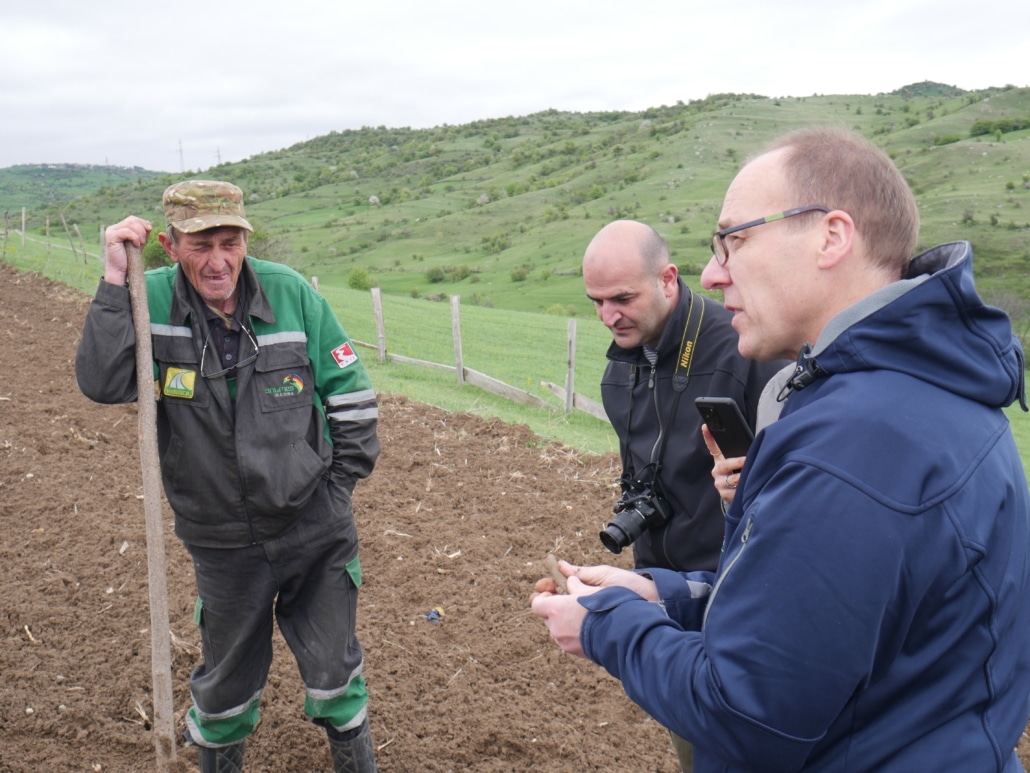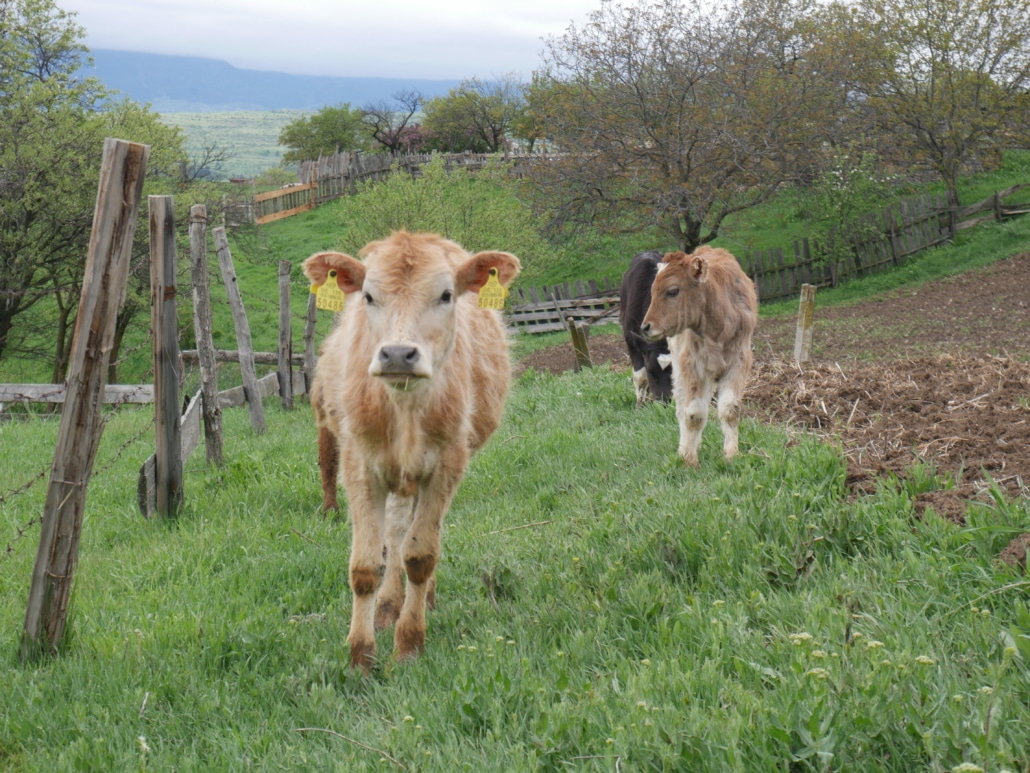At the beginning of May 2022 a meeting was held in Akhaltsikhe in the Lesser Caucasus region of Georgia to report on the technical and economic results of the 17 dairy farmers involved in monthly monitoring of their farms. For 4 years the GBDC (Georgian Business Development Center) has been offering to farmers from the Ertoba association this approach, which allows them to better monitor their farms and discuss with peers about the levers to increase their income.
Difficulties in feeding the herd
“This year has been difficult I ran out of food because the frosts were late and it was very dry during the summer. I had to mow in the mountain pastures at 3,000 meters of altitude to build up my stocks for the winter… but it cost me dearly” explains Nugzar, dairy farmer in Iveria at the start of the 2021 results reporting meeting.
For Samvel the year was quite satisfactory but he also encountered the problem of food: “It is still a problem; I would like to produce more and enlarge my herd but I don’t have enough land to graze. So I bought food from outside but the prices keep going up.”
These difficulties of access to fodder in 2021 have concretely resulted in a drop in the volumes of milk produced (-21%) and in an increase in expenses dedicated to feed. They put the farms in difficulty during the winter of 2021/2022. Some farmers had to decide to resell part of their livestock due to a lack of fodder stocks.
Average lactation curve for a cow
Comparison between milk price variations and the average lactation curve – Year 2021 (Group average data)
The average price of milk on the rise
Despite these challenges, farmers are surprised at their positive results. For the group the average gross margin in 2021 amounts to 1,498 GEL per cow (around €490); an increase of 18% compared to the previous year. “What saves us is the price of milk which has gone up this year” one of them quoted. There is indeed an increase of 0.09 GEL per liter of milk which represents an average gain per cow of 135 GEL. However, apart from those who process their milk into cheese, farmers have no control over the price of milk.
A decision support tool
Beyond the numbers, graphs and rankings presented during this restitution, the farmers were invited to discuss their practices, justify their results and understand what made the difference with their neighbour. Above all these margin calculations allow farmers to understand the different strategies that each has chosen and to assess those that have paid the most.
Aware that they have little leeway when it comes to the price of milk farmers concluded this meeting on the need to produce more and therefore to feed their cows better: build up more stocks for the winter to continue producing milk in winter; make better use of grazing land and produce more quality fodder; better balance rations. So many avenues that will be worked on during the year with GBDC technicians.






